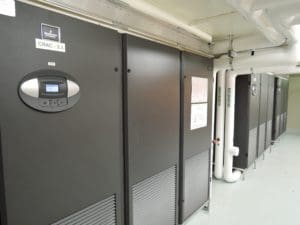Renewable energy is not just a trend; it’s a vital investment for a sustainable future. At EziBlank, we are committed to transforming how businesses manage their energy consumption and airflow, enabling you to harness the true potential of renewable sources. Our innovative solutions, such as cutting-edge blanking panels, not only maximise efficiency but also contribute to a greener environment. Join the movement towards energy sustainability and see how EziBlank can enhance your operations, reduce costs, and support your environmental goals today!
Green Data Center Concepts
Green data centre concepts focus on minimising the environmental impact of these energy-intensive facilities while maintaining high levels of performance and reliability. Key strategies include using renewable energy sources, such as solar or wind power, to reduce reliance on fossil fuels and incorporating energy-efficient technologies like advanced cooling systems that utilise free cooling or liquid cooling methods. Additionally, green data centres often employ design features that enhance energy efficiency, such as cold and hot aisle containment to optimise airflow and reduce cooling requirements. The adoption of energy-efficient hardware and the implementation of effective power management practices, including real-time monitoring and optimisation of power usage effectiveness (PUE), are also central to green data centre operations. By integrating these concepts, businesses can reduce their carbon footprint, lower operating costs, and contribute to a more sustainable future.
Read More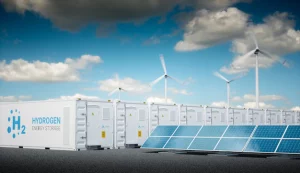
Designing an Energy-Efficient Data Center
Designing an energy-efficient data centre requires a strategic approach that combines advanced technology with best practices in layout and infrastructure management. The foundation of an energy-efficient design begins with optimising the physical layout, such as implementing hot and cold aisle containment to prevent the mixing of hot and cold air, which significantly reduces the burden on cooling systems. Incorporating energy-efficient hardware, such as servers and storage devices that consume less power, is also crucial. Additionally, leveraging renewable energy sources like solar or wind power can greatly reduce the carbon footprint of the facility. Effective monitoring and management tools are essential for tracking energy use and making real-time adjustments to improve efficiency. By focusing on these elements, a data centre can achieve optimal performance while minimising energy consumption and operational costs.
Read More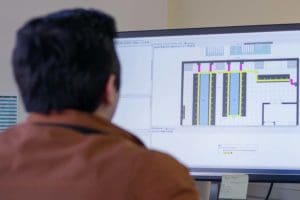
Data Center Energy Efficiency Measures
Improving energy efficiency in data centres is essential for reducing operational costs and minimising environmental impact. Several key measures can be implemented to enhance efficiency, starting with optimising airflow management through the use of blanking panels, which prevent the recirculation of hot air and ensure that cool air is directed precisely where it’s needed. Upgrading to energy-efficient hardware, such as servers and storage devices with lower power consumption, is another important step. Additionally, adopting advanced cooling techniques, such as liquid cooling or free cooling, can significantly reduce the energy required to maintain optimal temperatures. Monitoring tools that track power usage effectiveness (PUE) allow for real-time adjustments to improve efficiency further. These measures not only lower energy consumption and costs but also contribute to a more sustainable and resilient data centre operation.
Read More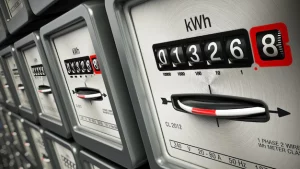
Green Data Center Case Study
A green data centre case study highlights how implementing sustainable practices can lead to significant environmental and financial benefits. In one example, a data centre achieved substantial energy savings by integrating renewable energy sources such as solar and wind power into its operations. Additionally, the facility utilised advanced cooling technologies, including free cooling and liquid cooling systems, which drastically reduced the reliance on traditional, energy-intensive air conditioning. The implementation of hot and cold aisle containment systems further optimised airflow, minimising energy waste. Through these initiatives, the data centre not only reduced its carbon footprint but also realised considerable cost savings, demonstrating that sustainability and efficiency can go hand in hand. This case study serves as a model for other facilities aiming to transition towards greener, more energy-efficient operations.
Read More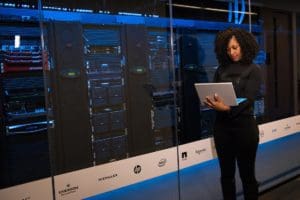
The Advantages of a Green Data Center
A green data centre offers numerous advantages, both for the environment and for the businesses that operate them. By prioritising energy efficiency and sustainability, green data centres significantly reduce their carbon footprint, contributing to environmental conservation and aligning with global efforts to combat climate change. These facilities often utilise renewable energy sources, such as solar or wind power, which not only cuts down on greenhouse gas emissions but also reduces reliance on traditional, non-renewable energy sources. Additionally, green data centres implement advanced cooling technologies and airflow management strategies, such as hot and cold aisle containment, to optimise energy use and lower operational costs. The financial benefits are substantial, as reduced energy consumption translates directly into cost savings over time. Furthermore, operating a green data centre can enhance a company’s reputation, demonstrating a commitment to sustainability that resonates with environmentally conscious customers and partners. Overall, the shift towards greener data centres is not only a responsible choice for the planet but also a strategic business decision.
Read More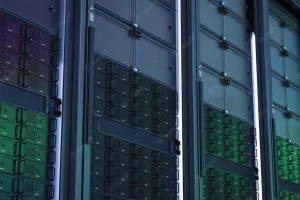
How to Reduce Energy Consumption in a Data Center
Reducing energy consumption in a data centre is essential for cutting operational costs and promoting sustainability. One of the most effective strategies involves optimising airflow management by using blanking panels to block unused rack spaces, which prevents hot air recirculation and ensures that cool air is directed where it’s needed. Implementing hot and cold aisle containment systems further enhances cooling efficiency by separating hot and cold air streams, reducing the energy required for cooling. Upgrading to energy-efficient hardware, such as low-power servers and storage devices, can also significantly lower energy consumption. Additionally, adopting advanced cooling technologies like liquid cooling or free cooling can drastically reduce the reliance on traditional air conditioning. Regular monitoring and analysis of power usage effectiveness (PUE) allow data centre managers to identify inefficiencies and make real-time adjustments to optimise energy use. These measures, when combined, can lead to substantial energy savings, lower operating costs, and a reduced environmental impact for the data centre.
Read More
Defining and Being a Green Data Center
A green data centre is one that prioritises sustainability and energy efficiency in its design, operations, and maintenance, aiming to minimise its environmental impact while maintaining high performance. This is achieved through several key strategies, including the use of renewable energy sources such as solar or wind power to reduce reliance on fossil fuels. Energy-efficient hardware, advanced cooling techniques like free cooling or liquid cooling, and effective airflow management using hot and cold aisle containment are also integral to green data centres. These facilities often implement rigorous energy monitoring and management practices to optimise power usage effectiveness (PUE) and reduce waste. Being a green data centre means not only adopting these technologies and practices but also committing to ongoing improvements and innovations that further reduce environmental impact. This approach benefits both the planet and the bottom line, as reduced energy consumption translates to lower operational costs, and the commitment to sustainability can enhance a company’s reputation and appeal to environmentally conscious customers and partners.
Read MoreBest Practice Guide for an Energy Efficient Data Center
Creating an energy-efficient data centre involves implementing best practices that optimise performance while minimising energy consumption. Key strategies include effective airflow management, such as using blanking panels and hot/cold aisle containment to prevent the mixing of hot and cold air, thus reducing the load on cooling systems. Upgrading to energy-efficient hardware and utilising advanced cooling technologies like liquid or free cooling can significantly lower energy use. Regular monitoring and optimisation of power usage effectiveness (PUE) are also crucial, allowing for real-time adjustments that enhance efficiency. These practices not only reduce operational costs but also contribute to a more sustainable and environmentally friendly data centre.
Read More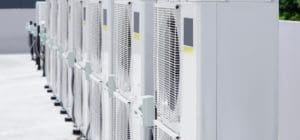
Higher efficiency is the new energy standard for data centre
Higher efficiency has become the new energy standard for data centres as organisations increasingly prioritise sustainability and cost-effectiveness in their operations. Achieving this standard involves adopting advanced technologies and best practices that significantly reduce energy consumption without compromising performance. Key strategies include optimising airflow management with solutions like blanking panels and hot/cold aisle containment, which prevent the mixing of hot and cold air, thereby improving cooling efficiency. Upgrading to energy-efficient hardware and implementing advanced cooling techniques, such as liquid cooling, also contribute to reducing power usage. Additionally, real-time monitoring of energy metrics, such as Power Usage Effectiveness (PUE), allows data centre managers to make informed decisions and continually refine their operations. Embracing these practices not only helps data centres lower their operational costs but also aligns them with global sustainability goals, making higher efficiency the new benchmark in the industry.
Read More